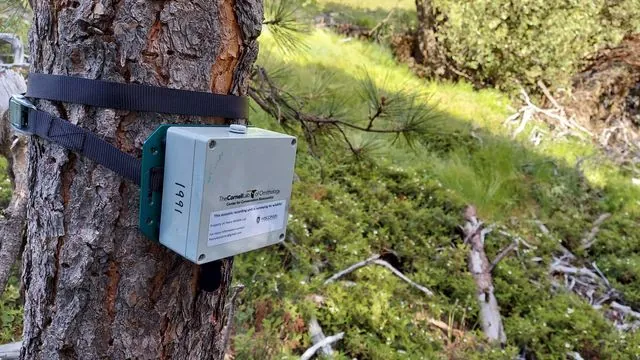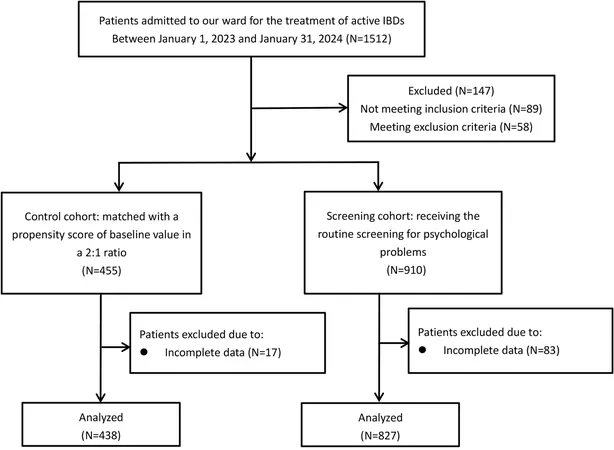
Unlocking Secrets of Nature: How Monitoring Birds Can Save Entire Ecosystems
2025-05-27
Author: Jacob
The Surprising Link Between Birds and Ecosystem Health
A groundbreaking study from the Cornell Lab of Ornithology reveals a powerful strategy for preserving biodiversity: by keeping tabs on select bird species, we can protect a host of other wildlife in diverse regions.
Published in the esteemed *Conservation Biology*, this innovative research dives into over 892,000 hours of bird song recordings from California's Sierra Nevada, testing the ‘umbrella species concept’. This approach suggests that monitoring a few indicator species can yield insights about the broader ecosystem.
Gaining Insights from the Feathered Friends
Lead researcher Kristin Brunk, now based at the University of Oslo, emphasizes that this theory, while often applied in conservation, has seldom been tested on such a massive scale. The study focused on six key bird species, including the revered California spotted owl, chosen for their representation of unique habitat requirements that also support numerous other birds.
For instance, the presence of the California spotted owl typically points to the existence of mature forests, homes to other vulnerable species like the golden-crowned kinglet and hermit warbler.
The Power of Technology in Conservation
Utilizing cutting-edge recording technology and AI, the research team collaborated to track bird cohabitation across a staggering 25,000 square kilometers—an area akin to the entire state of Vermont. The SwiftOne recording devices captured bird sounds around the clock, while the BirdNET software helped classify the multitude of species.
Connor Wood, co-author and research faculty at the Yang Center, states, “We’re entering a new era of conservation science.” These technological advancements enable researchers to gather and analyze data on an unprecedented scale.
Encouraging Findings for Conservation Efforts
The results were promising: a whopping 95% of forest birds studied displayed positive correlations with at least one of the six focal species. This indicates that by nurturing the habitats of these bird species, we can safeguard a multitude of other wildlife.
Navigating Latitude Variability
Brunk highlights an intriguing revelation from the research: the effectiveness of these surrogate species can vary significantly across different latitudinal regions. For example, a bird in the northern Sierra Nevada may have a strong connection to a surrogate, while showing little to no relationship in the southern expanse.
This reinforces the importance of localized conservation strategies and customizing approaches based on geographic and ecological contexts.
A Critical Time for Forest Conservation
As climate change and severe wildfires pose growing threats to forests, the insights from this study offer vital information for managers. By understanding which bird species serve as reliable indicators of forest health, conservationists can hone their efforts more effectively.
Brunk urges a careful selection of surrogate species, stating, “A good surrogate should be a specialist clearly linked to distinct habitat conditions.” This research not only fills knowledge gaps but also steers the course for future conservation initiatives.









 Brasil (PT)
Brasil (PT)
 Canada (EN)
Canada (EN)
 Chile (ES)
Chile (ES)
 Česko (CS)
Česko (CS)
 대한민국 (KO)
대한민국 (KO)
 España (ES)
España (ES)
 France (FR)
France (FR)
 Hong Kong (EN)
Hong Kong (EN)
 Italia (IT)
Italia (IT)
 日本 (JA)
日本 (JA)
 Magyarország (HU)
Magyarország (HU)
 Norge (NO)
Norge (NO)
 Polska (PL)
Polska (PL)
 Schweiz (DE)
Schweiz (DE)
 Singapore (EN)
Singapore (EN)
 Sverige (SV)
Sverige (SV)
 Suomi (FI)
Suomi (FI)
 Türkiye (TR)
Türkiye (TR)
 الإمارات العربية المتحدة (AR)
الإمارات العربية المتحدة (AR)